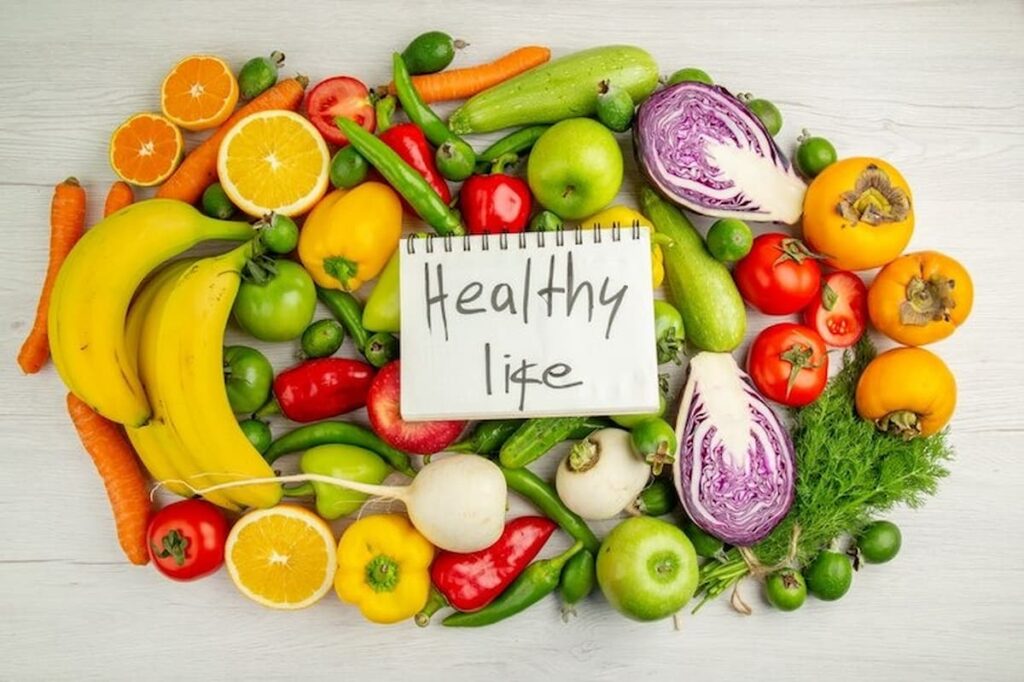A balanced diet comprises items from all five categories of food and meets everyone’s nutritional requirements. A balanced diet minimizes the likelihood of disease and aids in preserving one’s health. It might be difficult to stay up to date on the most recent advice and know what to consume because nutritional guidelines change as science progresses. If you are a milkshake enthusiast then know that milkshakes can be a good option that can greatly aid you in your quest to achieve a balanced diet, right now why don’t you go ahead and find some amazing Milkshake Places in Stockport and enjoy a good and healthy milkshake.
A Balanced Diet Is What?
A balanced diet meets each person’s nutritional requirements. To remain healthy, individuals require a specific number of calories and nutrients. A balanced diet gives a person all the nutrients they need without exceeding the daily calorie allowance. Individuals may consume the nutrients and calories they require by consuming a well-rounded diet while avoiding junk food or other foods with little nutritional value. Experts used it to advise adhering to the food pyramid. Nevertheless, given the advancements in nutritional research, it is now advised to construct a balanced plate using items from all 5 food categories. The expert’s suggestions state that fruits and vegetables may make up half of a person’s plate. Grain and protein must make up the remaining half. They advise including a dish of low-fat dairy or another form of the nutrients present in dairy with each meal.
Why It’s Crucial To Have a Balanced Diet
Your body receives the minerals it requires for proper functioning from a balanced diet. Your body is much more vulnerable to illness, infection, weariness, and poor performance without a nutritious diet. Kids who don’t consume enough nutritious foods may experience issues with their growth and development, poor educational success, and recurrent infections. Kids could also pick up bad dietary habits which they keep as adults. Without exercise, they’ll additionally be more likely to develop obesity and other ailments like type 2 diabetes and high blood pressure which are all part of the metabolic syndrome.
The 5 Food Categories
A nutritious diet must include items from all 5 of these food groups:
- Fruits
- Veggies
- Grains
- Protein
- Dairy
Vegetables
The vegetable category is broken down into five subgroups:
- Vibrant greens
- Orange or red vegetables
- Fibrous veggies
- Legumes like beans and peas
- As well as other veggies like zucchini or eggplant
Individuals must select a variety of veggies to receive essential nutrients and prevent nutritional monotony. It’s crucial to keep in mind nevertheless since preparing veggies depletes them somewhat nutritionally. Moreover, some techniques, like deep-frying, may add unhealthy fats to a dish.

Fruits
Plenty of fruit is another component of a nutritious diet. Nutrition experts advise eating entire fruits rather than fruit juice. Juice is deficient in nutrients. Moreover, the production process frequently adds useless calories because sugar is added. Fruits should indeed be consumed fresh, frozen, or canned in water rather than syrup.
Grains
Whole grains & refined grains are the 2 kinds of grains. The three components of the grain—the bran, germ, and endosperm—are present in whole grains. Whole grains take longer for the body to digest, thus they have a smaller impact on someone’s blood sugar. Furthermore, whole grains often have higher levels of protein and fibre than processed grains. Refined grains have undergone processing and are devoid of the 3 main ingredients. In addition to having less protein and fibre, refined carbohydrates can raise blood sugar levels.
Before, grains made up the majority of a person’s daily caloric intake because they were the foundation of the government-approved food pyramid. Nevertheless, the revised recommendations state that only 25% of a person’s plate must be made up of grains. A person must consume whole grains for at least the majority of their daily grain intake. Whole grains that are healthy involve:
- Rice
- Oats
- Quinoa
- Wheat
- Buckwheat
Protein
According to the recommendations, a person’s plate may contain a fifth of this protein. Among the nourishing protein options are:
- Beans
- Peas
- Lentils
- Lean beef and pork,
- Chicken and turkey
- Fish
Dairy
Products made from dairy and enriched soy are essential sources of calcium. If possible, low-fat alternatives are advised by experts. Dairy and soy products with reduced fat include:
- Cheeses like cottage or ricotta
- Yoghurt
- Low-fat milk
- Soy milk
Individuals who are lactose intolerant may pick low-lactose or lactose-free goods or calcium and other dietary components based on soy.
Final Words
Consuming foods from the 5 primary food categories constitutes a balanced diet. As scientists learn more about nutrition, nutritional guidelines evolve. According to current standards, a person’s plate should mostly consist of veggies and fruits, a little lean protein, some dairy, as well as soluble fibre. Those who are seeking to lose weight must also think about including daily exercise in their daily activities.






